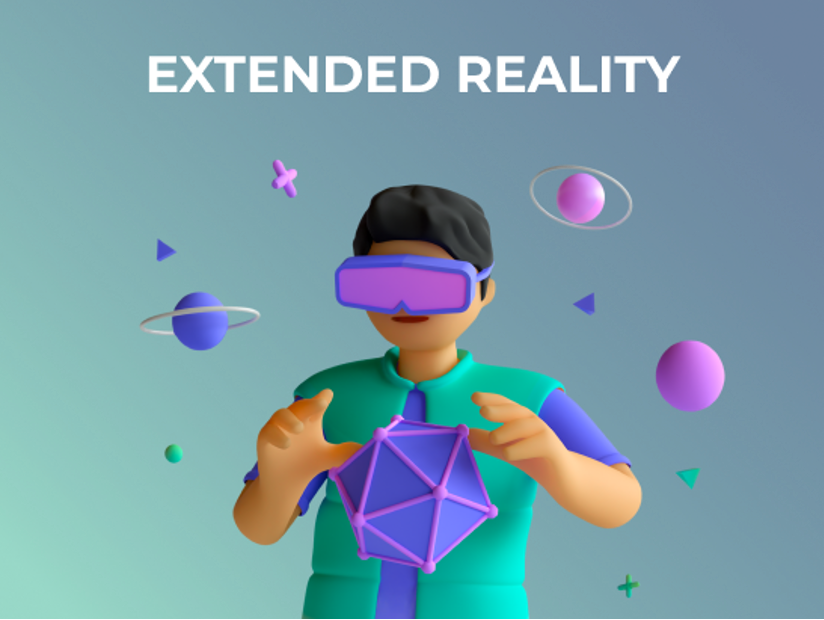With innumerable possible applications, extended reality is becoming more and more important and relevant in our lives. Undoubtedly, it is a topic that in recent years has gained much more strength and presence in multiple ways.
However, what is actually extended reality? When did it mainstream implementation begin? What are the possibilities with these new technologies?
I invite you to learn a little more about this incredible new set of hardware & software technologies.
What is extended reality (XR)?
I would like to start with the definition of XR (Extended Reality). However, coming up with a dictionary definition is not straightforward. What we can do is define the term in terms of applications that include XR.
XR will be the general term used to encompass virtual reality (VR), augmented reality (AR), and mixed reality (MR), in addition to including any type of environment that combines the real with the virtual, as long as it allows interaction through any digital device.

XR represents a fundamental change in how users interact with media and platforms in a more interactive and fluid way.
Now that we've started talking about XR, there are other terms that could confuse us That's why I would like to talk about the differences between VR, AR & MR.
Virtual Reality
Virtual reality allows us to place the user within a world or ecosystem generated through software, which is why we speak of a virtual world. It is important to emphasize that virtual reality provides natural interaction, using gestures with a controller, hand, or fingers and speech as an input.
The user does not interact with any object outside the virtual world. As an examplethe users could be in their living room, or a game room and by using the correct peripherals such as headsets and controllers, they could be immersed in a simulated environment.
The uses of virtual reality cover a wide range of opportunities, from industrial areas to everyday entertainment uses. Some primary examples are:
Video games: most of them are very immersive and thanks to virtual reality that sensation can be amplified.
Engineering/Robotics: with the creation of various prototypes and simulation of multiple elements in safe spaces.
Education/Learning: where situations can be simulated in a much safer space for trainees and students.

Augmented Reality
Let's talk about augmented reality now. Augmented reality allows creation of virtual elements that can interact with real world elements.
AR elements are visible across multiple devices and platforms such as mobile phones, tablets or dedicated peripherals (such as AR glasses) bringing a new type of interactive experience to users. With this technology, we are overlaying digital information on top of real world artifacts.
The clearest example that outlines the differences with VR is the famous Niantic/Nintendo game POKEMON GO, a game that invited us to go for a walk around our house while we captured those friendly creatures from our cell phone. In a certain way we interacted with elements created virtually while we walked around in the real world.
There are multiple examples of the use of AR experiences, in multiple sectors such as:
Design: with the possibility of applying, it to interior design, mobile applications, web pages, and even construction or architecture.
Tourism: with some interactive projects related to experiences when visiting new cities or places, or galleries in museums.
Medicine: with the management and improvement of equipment for magnetic resonance or the performance of complex surgeries.

Mixed reality
Well, what is mixed reality then? It is important to have a clear understanding of the differentiation between AR and MR. The latter adds an additional element that allows computer-generated objects to interact with physical environments.
Thus, while AR acts as an overlay of digital information, MR gives the user real-time digital information that can interact with thephysical environments. This provides a deeper level of immersion as far as the user experience is concerned.
The following image summarizes the Extended Reality continuum and its key components.

This link is an excellent example of a Mixed Reality application.
How Extended Reality works
Extended reality works using a combination of devices or peripherals that allow us to complete our goals.
Examples of these devices can be headsets like HoloLens 2 and HTC Vive Pro that employ different types of sensors to track movement in fine degrees. Another hardware of note is Meta’s Quest 2 that provides excellent immersive experiencein video games and online events
Others, like Magic Leap One, use external cameras to project digital worlds onto real-world surfaces.
In addition, immersive experiences in the metaverse will probably impact most industries and all kinds of user interactions. XR is here to stay.

XR: A look into the future
The impact on industries will be marked by the development of user experiences, accessibility and user needs.
XR will definitely have a huge impact on the way we work, interact and play with each other. With these new technologies we can be physically local but at the same time digitally global.
As these technologies become more accessible, better and mature, our user experience will be revolutionized, creating fully immersive and interactive environments.
Perhaps in 15 years it could be possible to have a virtual campus where multiple students from different countries participate in a virtual environment, sports and events. Concerts and travel experiences would change equally.
About Encora
If you are interested in developing immersive experiences, designing virtual experiences or applications that use any of the technologies mentioned, you can approach our experts at Encora, we can surely help you.